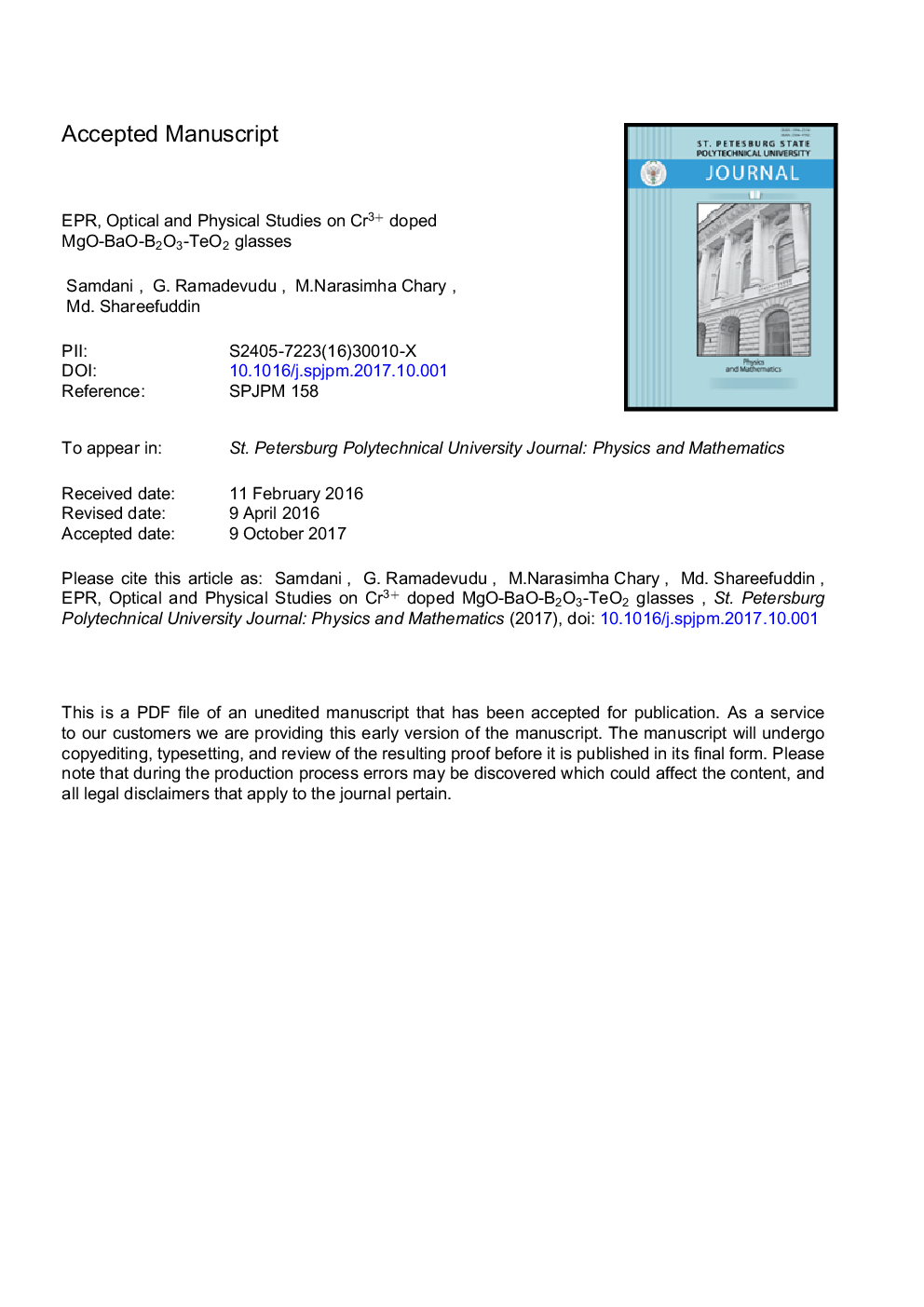| Article ID | Journal | Published Year | Pages | File Type |
|---|---|---|---|---|
| 8147171 | St. Petersburg Polytechnical University Journal: Physics and Mathematics | 2017 | 15 Pages |
Abstract
Physical, optical and Electron Paramagnetic Resonance (EPR) studies on 15MgO-15BaO-(59.8âx) B2O3-(10 + x) TeO2-0.2Cr2O3 (x = 0,10,20,30 mol%) glass samples are reported. EPR spectra exhibited two resonance signals at g = 4.8 and g = 1.98. The resonance signal with large zero field splitting parameter (D) and E/D â¤Â 1/3 at g = 4.8 is attributed to isolated Cr3+ centers in strongly distorted octahedral sites, whereas the resonance signal at g = 1.98 is assigned to Cr3+ centers at axially distorted octahedral sites. The resonance signal at g = 4.26 is assigned to Fe3+ ions, which are present in the glass matrix as unwanted impurities. The resonance signal at g = 1.91 indicates the Cr3+-Cr3+ exchange coupled pairs. The two observed broad optical bands in the optical absorption spectra 16,025 cmâ1 and 23,474 cmâ1 are assigned to 4A2g(F)â 4T2g(F) and 4A2g(F)â 4T1g(F) transitions, respectively. The site symmetry of Cr3+ is C4v or C3v. Racah parameters, crystal field (Dq) parameters and energy gap are evaluated from the optical spectra. Various other physical parameters like density etc. have also been reported.
Keywords
Related Topics
Physical Sciences and Engineering
Physics and Astronomy
Atomic and Molecular Physics, and Optics
Authors
Mohd Samdani, Gokarakonda Ramadevudu, M. Narasimha Chary, Md. Shareefuddin,
